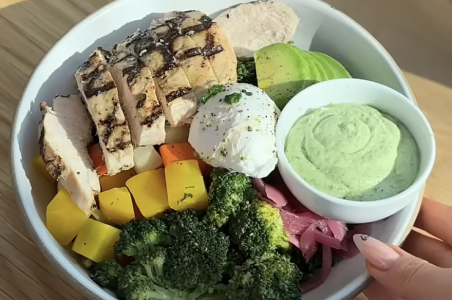Some “processed” foods may actually be good for you, scientists say
- Replies 0
Disclaimer: The information provided in this article is for educational purposes only and is not intended as a substitute for professional medical advice, diagnosis, or treatment. Always consult your physician or other qualified healthcare providers with any questions you may have regarding a medical condition or before making any changes to your health regimen.
For years, one type of food has carried a bad reputation—blamed for fueling obesity, raising the risk of heart disease, and even shortening lifespans.
It’s been a dietary villain in countless headlines and health campaigns. But new research is challenging that narrative, revealing that not all items in this category are created equal.
In fact, experts now say that some of these foods may not be as harmful as once believed—and a few could even play a role in a balanced, healthy diet, provided you know exactly which ones to choose and how to enjoy them in moderation.
The AHA’s scientific advisory, published August 8 in Circulation, challenges the one-size-fits-all condemnation of UPFs. While it acknowledges the risks of many processed foods—particularly those linked to adverse cardiometabolic outcomes—it also highlights examples that can deliver key nutrients, preserve food safely, and make healthy eating more affordable and accessible.
According to the AHA, certain processing techniques can actually improve public health by:

Registered dietitian Nichola Ludlam-Raine, author of How Not to Eat Ultra-Processed, says the difference comes down to the nutrient profile.
“Healthier UPFs are those that, despite undergoing industrial processing, still offer nutritional benefits, such as fiber, protein, vitamins, and minerals, and have limited amounts of added sugars, unhealthy fats, and sodium,” she explains.
Not all UPFs get a nutritional pass. Ludlam-Raine and functional medicine dietitian Samantha Peterson warn against overconsumption of:
Experts recommend that consumers become skilled at decoding food labels to separate the good from the bad.
Ludlam-Raine’s tips include:
More like this:

So… will this change how you shop for “processed” foods? Drop your thoughts below—are you team “not all UPFs are bad” or team “avoid them at all costs”?
For years, one type of food has carried a bad reputation—blamed for fueling obesity, raising the risk of heart disease, and even shortening lifespans.
It’s been a dietary villain in countless headlines and health campaigns. But new research is challenging that narrative, revealing that not all items in this category are created equal.
In fact, experts now say that some of these foods may not be as harmful as once believed—and a few could even play a role in a balanced, healthy diet, provided you know exactly which ones to choose and how to enjoy them in moderation.
The AHA’s scientific advisory, published August 8 in Circulation, challenges the one-size-fits-all condemnation of UPFs. While it acknowledges the risks of many processed foods—particularly those linked to adverse cardiometabolic outcomes—it also highlights examples that can deliver key nutrients, preserve food safely, and make healthy eating more affordable and accessible.
According to the AHA, certain processing techniques can actually improve public health by:
- Extending shelf life and reducing food waste
- Controlling harmful microbial growth
- Preserving taste, texture, and nutritional value
- Lowering costs for consumers

According to the AHA, certain processing techniques can actually improve public health. Image source: @growingannanas / YouTube
Registered dietitian Nichola Ludlam-Raine, author of How Not to Eat Ultra-Processed, says the difference comes down to the nutrient profile.
“Healthier UPFs are those that, despite undergoing industrial processing, still offer nutritional benefits, such as fiber, protein, vitamins, and minerals, and have limited amounts of added sugars, unhealthy fats, and sodium,” she explains.
Healthier Ultra-Processed Foods
Some examples of nutrient-rich UPFs include:- Fortified whole grain breads — providing fiber and complex carbohydrates for sustained energy
- High-fiber breakfast cereals — especially those fortified with iron and B vitamins, without excessive added sugar
- Certain dairy products — like plain or Greek-style yogurts with live cultures that support gut and bone health
- Fortified plant-based milks — such as soy or almond milk enriched with calcium and iodine, without added carrageenan
- Canned beans and pulses in water — technically processed, but still a great source of plant protein and fiber; rinsing can reduce sodium levels
The Less Healthy Side
Not all UPFs get a nutritional pass. Ludlam-Raine and functional medicine dietitian Samantha Peterson warn against overconsumption of:
- Sugar-sweetened beverages
- Refined snack foods
- Instant noodles
- Processed meats
Reading the Label: The Skill That Changes Everything
Experts recommend that consumers become skilled at decoding food labels to separate the good from the bad.
Ludlam-Raine’s tips include:
- Choosing bread or cereals with at least 3g of fiber per serving
- Opting for yogurts with 5–10g of protein and minimal added sugar
- Seeking out fortified products with calcium, vitamin D, B12, iron, and iodine
- Preferring shorter, recognisable ingredient lists — ideally with whole foods like oats, beans, or milk listed first
The 80:20 Rule
Both experts endorse a realistic approach:- 80% of your diet from whole, minimally processed foods like fresh fruits, vegetables, whole grains, and lean proteins
- 20% from healthier UPFs that offer convenience and nutrients
Less healthy UPFs? Save them for occasional treats rather than daily staples.
More like this:
- Not your typical suspect: this breakfast item may increase cancer risk
- The hidden dangers of a "natural" supplement: Families call for change after tragic losses
Key Takeaways
- AHA report challenges the blanket condemnation of all UPFs
- Healthier examples: fortified breads, plant milks, canned beans, Greek yogurt
- Less healthy examples: sugary drinks, instant noodles, processed meats
- Key strategy: check fiber, protein, fortification, and ingredient lists
Last edited:






